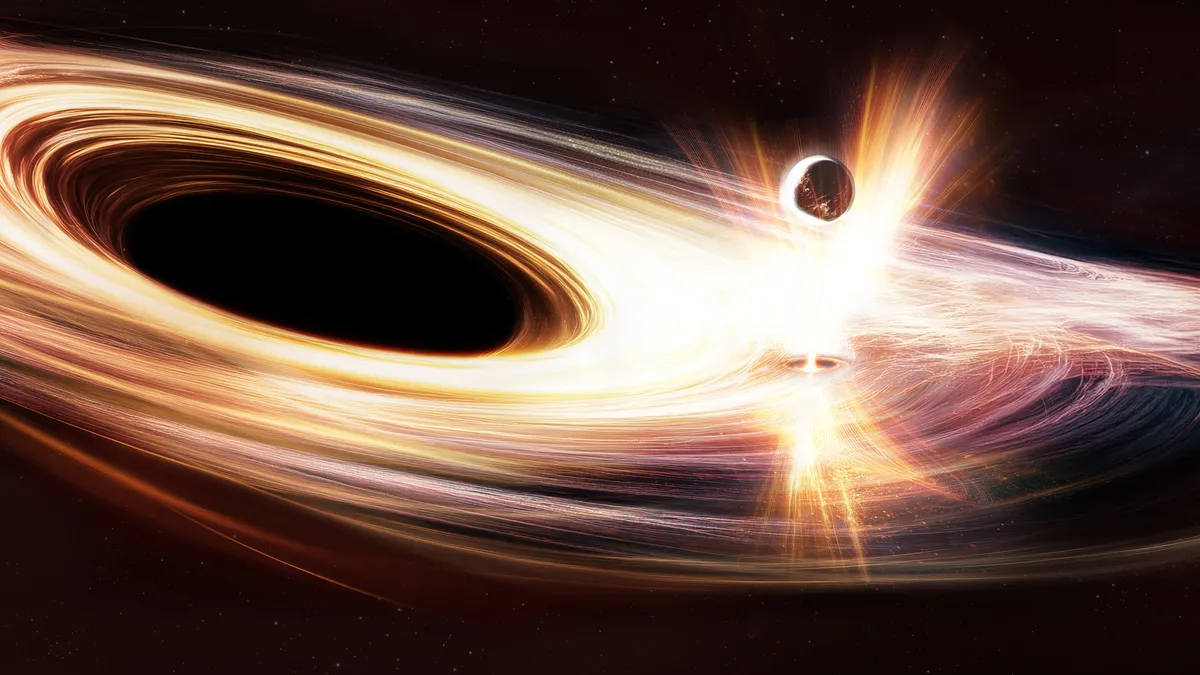
A massive black hole located at the center of galaxy SDSS1335+0728, situated in the Virgo constellation, is currently undergoing a fascinating transformation. Recent research has revealed that this dormant black hole is now "waking up," emitting intense X-ray flares at regular intervals, which has left scientists puzzled. The study was published on Friday in the journal Nature Astronomy.
Previously, astronomers paid little attention to galaxy SDSS1335+0728, which is approximately 300 million light-years from Earth. However, in 2019, the galaxy began to exhibit an unexpected brightness, prompting astronomers to direct their telescopes toward it. By February of the following year, Chilean astronomers detected regular bursts of X-rays emanating from the galaxy, indicating that the galaxy's sleeping black hole was indeed stirring from its slumber.
Supermassive black holes are a common feature at the centers of most galaxies, including our own Milky Way. They act like a spider waiting in its web, consuming anything that ventures too close—light included. When a star strays too near, it can be torn apart, and its fragmented material forms an accretion disk that spirals into the black hole. However, black holes can also enter extended periods of inactivity, during which they fail to attract matter. After a long dormancy, the previously quiet region at the heart of galaxy SDSS1335+0728 has now been classified as an active galactic nucleus and has been affectionately nicknamed "Ansky."
This extraordinary event provides astronomers with a unique opportunity to observe a black hole's behavior in real time. Lorena Hernandez-Garcia, an astronomer at Chile's Valparaiso University, noted that this situation allows for unprecedented observations of the black hole, stating, "This pushes models to their limits."
The short-lived X-ray flares emitted by Ansky are referred to as quasiperiodic eruptions (QPEs). Hernandez-Garcia remarked that this is the first instance of observing such an event in a black hole that appears to be awakening. While researchers currently theorize that QPEs are associated with the accretion disks formed after black holes consume stars, there is no evidence suggesting that Ansky has recently devoured a star.
What makes Ansky's flares particularly intriguing is that they are reported to be ten times longer and ten times more luminous than typical QPEs. Joheen Chakraborty, a Ph.D. student at MIT and a member of the research team, stated that each eruption releases a staggering hundred times more energy than previously recorded. The intervals between these X-ray bursts, lasting approximately 4.5 days, are also the longest ever documented, further challenging existing scientific models.
In light of these extraordinary observations, astronomers are developing various hypotheses to explain the peculiar bursts. One theory posits that the accretion disk is created by gas being drawn into the black hole, which subsequently emits X-ray flares when a small celestial object, such as a star, crosses its path. Norbert Schartel, the chief scientist of the European Space Agency's XMM-Newton telescope, illustrated this concept by describing a scenario where a star orbits the black hole, crossing the disk and generating flares at specific angles without a strong gravitational pull to draw it in.
Erwan Quintin, an X-ray astronomer, emphasized the current state of research, stating that for QPEs, "we're still at the point where we have more models than data." He underscored the necessity for more observations to better comprehend the underlying mechanisms behind these enigmatic bursts of energy.
This unprecedented activity from the black hole at the center of SDSS1335+0728 presents a significant opportunity for the astronomical community to expand their understanding of black holes and their behaviors. As researchers continue to monitor and analyze Ansky's behavior, new insights may emerge, potentially reshaping our understanding of these cosmic giants.